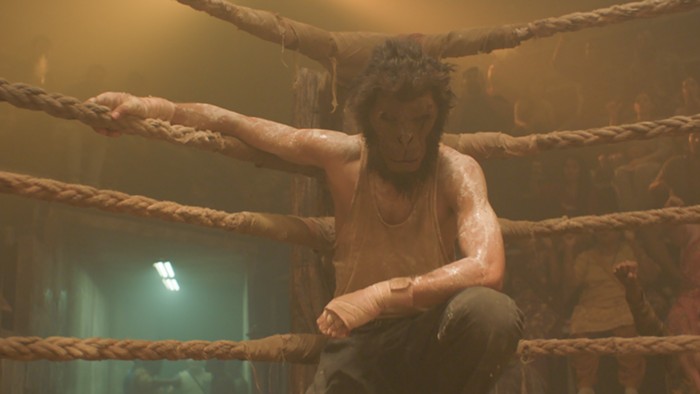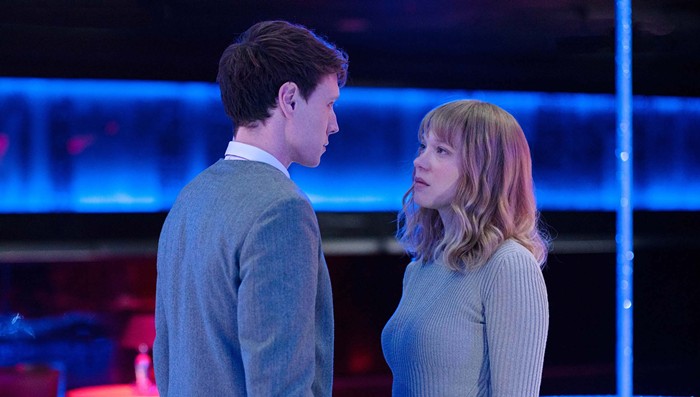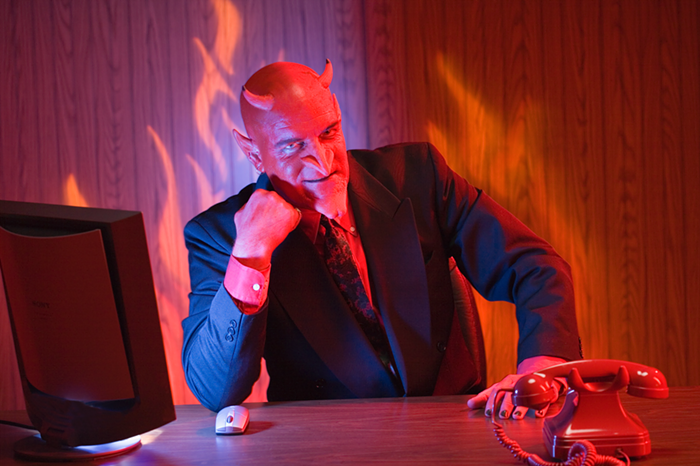There's nothing interesting about geniuses. Flawless works—and those who create them—are usually boring as hell and twice as predictable. Yeah, there's no denying the monumental impact that geniuses have had, and will always have, on art. But there's also no denying that people—and the works they create—are far more interesting when they're imperfect, messy, even broken.
That's especially true, maybe, with film—an art form at once open-ended and concrete, definite as it surrounds your eyes and ears in a dark theater, yet open for debate as soon as the end credits start their monotonous roll. There can be perfect films that stir up emotion and argument, sure, but usually the ones that really hit you, or really make you think, are the ones that're a tad clunkier. Not genius, per se, but close—films that get tantalizingly near to something, even if they never quite hit it.
M. Night Shyamalan isn't a genius, but he's maddeningly close. His career exploded with 1999's The Sixth Sense, which was, by all definitions, a sensation: Written and directed by Shyamalan, it grossed over $600 million worldwide and immediately gave Shyamalan fame, fortune, and the weight of vast expectations. Fittingly, The Sixth Sense wasn't genius, but it was close: A drama that was equally adept with horror and mystery, it married a contemplative tone and gorgeous visuals, creating something that hadn't been seen in pop culture before: A popcorn art film. (And that's aside from its infamous twist ending, which was instantaneously entered into the pop culture and parody canon.) It was a great movie—smart, creepy, and fun, the like of which hadn't been seen since the heyday of another near-genius, Steven Spielberg.
Which led, of course, to the 29-year-old Shyamalan getting marketed like a Spielberg—he was hailed as the next wunderkind of pop cinema. Unbreakable, his superhero-flavored follow-up to The Sixth Sense, (predictably) made less money but (unpredictably) was an even better film—though the fact that Shyamalan used another twist ending wasn't exactly heartening. And when his family drama/alien invasion film Signs was released in 2002, Shyamalan landed the cover of Newsweek, alongside the headline "The Next Spielberg"—even as another comparison, to Alfred Hitchcock, started to be murmured.
But while Unbreakable and Signs did well, they never touched the popular appeal of The Sixth Sense, and Shyamalan began to develop idiosyncratic clichés: his plots always juxtaposed normal people with the otherworldly; his predictable, tiresome use of twist endings. But even as Shyamalan painted himself into a corner as "the twist ending guy," he also began to grow as a filmmaker.
Working with great cinematographers Eduardo Serra and Tak Fujimoto, Shyamalan developed a brilliant look and tone unlike anyone else's, and he honed his unique, patient, confident pacing: His shots, scenes, and films feel like a slice of everyday, serene Americana in still-life, in muted, realistic colors that nevertheless hold a hint of the incredible, a use of music and editing and light that creates a tone at once familiar and off-putting, warm and scary. If nothing else—and despite the increasing sneers thrown his way—Shyamalan has given pop cinema an art, a poise, a sense of beauty. Even as he writes dramas that masquerade as thrillers, and even as he crams his casts with ghosts, superheroes, and aliens, Shyamalan's projects are films first, genre projects second.
Then came 2004's The Village, a critical and commercial bomb that—once again—continued Shyamalan's streak of plot twists (The Village's are lamer than most) and introduced a more problematic narrative. With this, a period film, Shyamalan might've been trying to break out of his self-imposed formula, but he didn't do it well—for all of its solid, even great elements, The Village largely served as ammunition for Shyamalan's growing cadre of detractors.
So: Lady in the Water, his latest, is another attempt by Shyamalan to branch out—this time into a lighter tone and a more whimsical story. Lady in the Water is, by all measures, a fairy tale, a story for kids; following a stuttering super at an apartment complex, Cleveland Heep (Paul Giamatti, great as always), the film wastes no time introducing its fantasy elements. There's the water nymph (Bryce Dallas Howard) who shows up in Cleveland's swimming pool, talking in annoying half-riddles about "the blue world" and asking if Cleveland feels "an awakening." Soon, there're enough fantastical elements to make a Dungeons & Dragons dweeb blush: evil dogs made out of plants, magical monkeys in nearby trees, giant eagles swooping through the sky. Lady in the Water's more impatient than Shyamalan's previous work, and far less meditative—the elegant, striking cinematography, this time by Christopher Doyle, is rarely given a moment to shine. Shyamalan's quickened pacing isn't all that's new, either: Intent on deconstructing his plot, he tosses away interesting themes in favor of over explaining what should be a straightforward bedtime story. (Short version: Water nymph comes to our world to do good, is now being chased by forces of evil, thus requiring Cleveland's help.) There are more glaring flaws, too: Shyamalan, as usual, plays a role in his film, though this marks the first time he's written a character for himself who's (wince) a brilliant writer. (Think that's masturbatory? Wait until Shyamalan kills off a character who happens to be a film critic.)
The tone here is atypical, too. Don't believe the marketing campaign, which is selling Lady as a thriller—this is a kids' movie, in spirit if not execution, and the mood here is light, even comedic, despite a few scares. Gone is The Sixth Sense's dour gloom, and absent is Signs' disquieting tension, having been replaced with not-quite-interesting dialogue and vague situations that fail to stir any emotional response.
So on a good number of levels, Lady in the Water is a failure. But that's not to say it's completely useless. Take, for example, this: Lady in the Water's twist ending is that it doesn't have one. Or this: When he's not pedantically over clarifying it, Shyamalan's peculiar mythology is actually pretty rad. Or this: There are moments in Lady in the Water where, despite all of his missteps, Shyamalan hits upon inimitable moments of beauty, of inexplicable weirdness, of sheer visual emotion.
Are those moments numerous enough to save the movie? Not even close. But perhaps Lady in the Water has another purpose, a more important one: It's different enough from Shyamalan's prior work to make one think that, finally, the filmmaker is headed somewhere new—somewhere away from twist endings and beyond familiar tropes. While Lady in the Water proves, with little doubt, that Shyamalan's no genius, it's unwise to hold that against him—because the film also proves that he's still maddeningly close to being the filmmaker that everyone once hoped he would be.



















